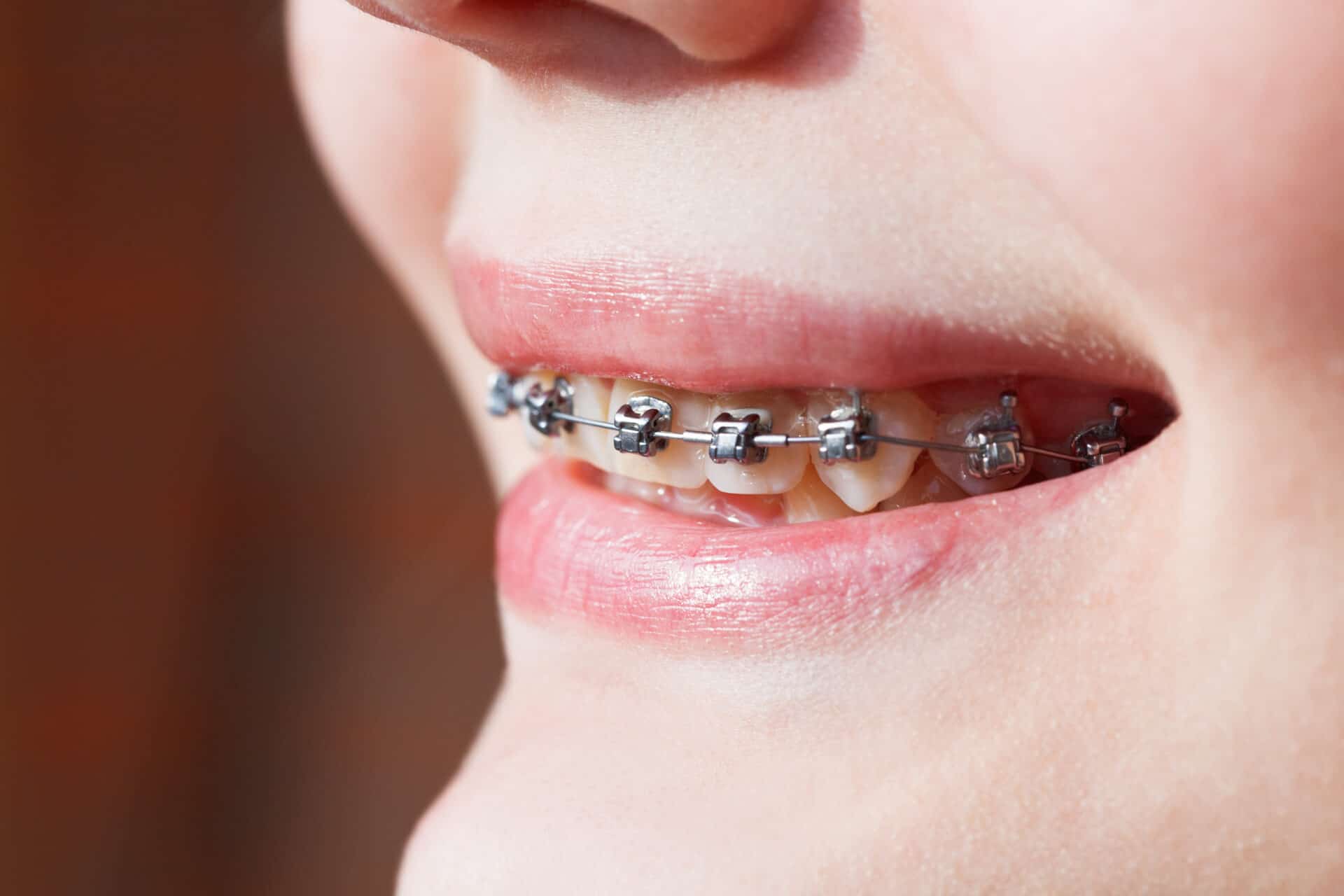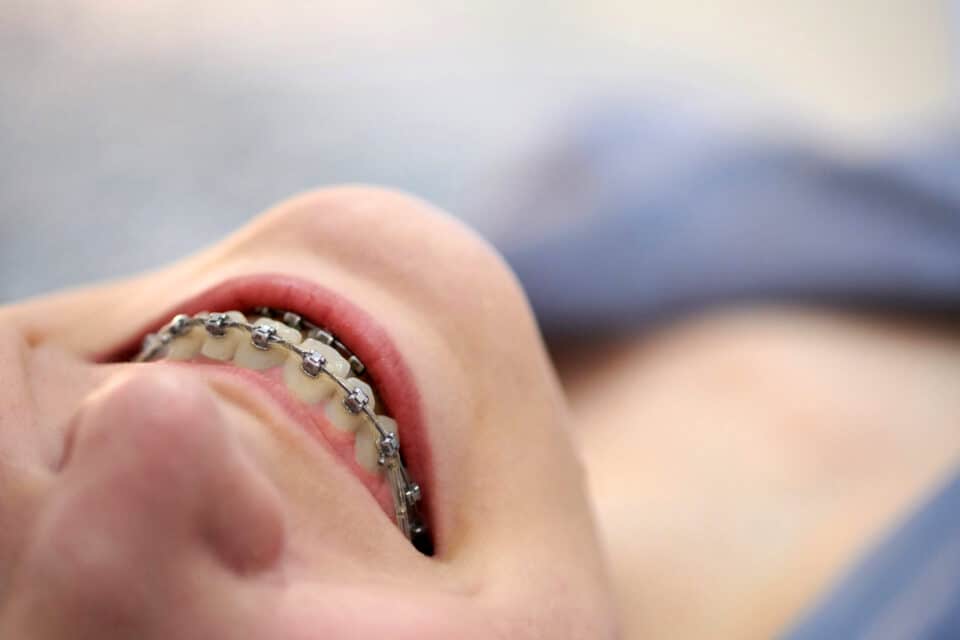Metal Braces in Peoria, AZ
Metal Braces use a self-ligating system to connect archwires to brackets, which is a sliding mechanism that makes the movement of the teeth more gradual and natural. The lighter forces also help prevent undue gum recession and tooth loss. They are made of stainless steel and polycarbonate. We also offer clear Damon brackets that are made of stain resistant clear ceramic.

Traditional braces have been a trusted orthodontic solution for years. Metal Braces now introduce modern features and benefits that enhance the treatment experience.
The standard (older design) metal braces are known as “twin” brackets. The newer metal braces that decrease friction and allow lower forces to move teeth are called “self-ligation” brackets. There are many manufacturers. We use both twin and self-ligating brackets, depending on the needs of each patient as determined by the doctor. The advantage to self-ligation being lower friction, increased efficiency and improved oral hygiene.
One of the key benefits of Metal Braces is their use of lighter forces, which help prevent undue gum recession and tooth loss. Made of durable stainless steel and polycarbonate, Metal Braces provide a reliable and long-lasting solution for correcting a variety of orthodontic issues.
In addition to traditional stainless steel brackets, we also offer Empower2 brackets in both clear and metal options. These brackets, manufactured in the USA by American Orthodontics, provide a more discreet option for patients who prefer a less noticeable orthodontic treatment.
What Are Metal Braces Made Of?
Brackets
The brackets are durable and made from a mix of stainless steel, nickel, and other metals. Brackets have little hooks or doors where a wire is threaded. A bracket can be secured by closing the door, or by placing an elastic over the top of the wire.
Glue
This is what Our Doctors will use to attach the brackets to your teeth. It’s common to attach the bracket directly to the tooth with glue.
Wire
This thin piece of metal runs from one bracket to another. Our Doctors will change the shape and curvature of the wire to move your teeth in the right direction. The wire will attach all of your bottom or upper teeth together in many cases, but we might occasionally cut the wire if connecting just a few teeth is better for your treatment plan.
Elastics
If you need bite correction, elastics are essential. They are generally strung between an upper bracket hook and a lower bracket hook. This will pull the upper jaw backward to aid in improving an overbite, or the lower jaw back to aid in improving an underbite. We may use rubber bands for many different situations, especially when we want to put extra pressure on your teeth or jaws.
Orthodontic Bands
These are stainless steel rings that are cemented to your teeth using dental bonding agents. These bands can provide an anchor for your braces and orthodontic appliances, but they are not used for everyone.
Spacers
These small elastic “donuts” or rings can be used to create space in between your teeth when needed, typically before bands are placed. They are also referred to as separators.
Elastic Ties/O-Rings/Ligatures/Colors
These tiny rubber rings or bands are used to attach the archwire to the brackets. They’re less rigid than spacers and come in dozens of colors.
With Metal Braces, you can achieve a straighter, healthier smile with greater comfort and efficiency. Experience the benefits of this innovative orthodontic solution at Redstone Orthodontics.
Frequently Asked Questions
Contact usHow do braces work?
The first step in your orthodontic treatment is gathering detailed images of your teeth and bite. Our team takes photographs and X-rays, and in some cases, we use the iTero Element scanner to create a highly accurate 3D model of your mouth. This digital scan, which takes about 10-15 minutes, helps us plan your treatment with precision.
Using this information, our doctors develop a customized treatment approach, determining the exact movements needed to align your teeth properly. The placement of brackets is carefully chosen to guide these movements, ensuring that each tooth shifts in the right direction.
Once the brackets are secured, we insert an archwire to gradually move your teeth into position. As your treatment progresses, adjustments are made to refine alignment. In the final stages, orthodontists use a technique called “detailing,” where precise bends are placed in the wire to fine-tune individual tooth positions and perfect the final result.
What can I expect from today's metal braces?
Metal braces have had a reputation for being awkward and obvious, but because of modern orthodontics, you will benefit from versions that are smaller, less conspicuous, and more comfortable than ever before.
Sleeker brackets and lighter wires improve the appearance and feel of these braces. This means you will have less irritation in your mouth.
Traditional metal braces also come with a fun new twist without any extra cost – you can customize them with pops of color. The elastics that fit around your brackets come in a wide variety of colors that let you showcase your personality whenever you want.
Pick your favorite color combination, the colors of your favorite sports team, even your school colors! We also offer silver, gray, white, black, and tooth-colored elastics for patients seeking a more subtle look.
Braces are great at fixing complex tooth issues. They can work faster at closing gaps and aligning teeth than other treatments might. This can potentially shorten your treatment time.
Metal braces are a cost-effective option because they don’t require some of the more complex technology or expensive equipment that newer treatments do. The strength, durability, and affordability of traditional metal braces keep them the top treatment for orthodontic patients, year after year!
How long will I be in braces?
This is what everyone wants to know, but it’s one we don’t have a concrete answer for. Every mouth is different, and every patient responds to treatment in their own way. Treatment time with metal braces will be different every time.

